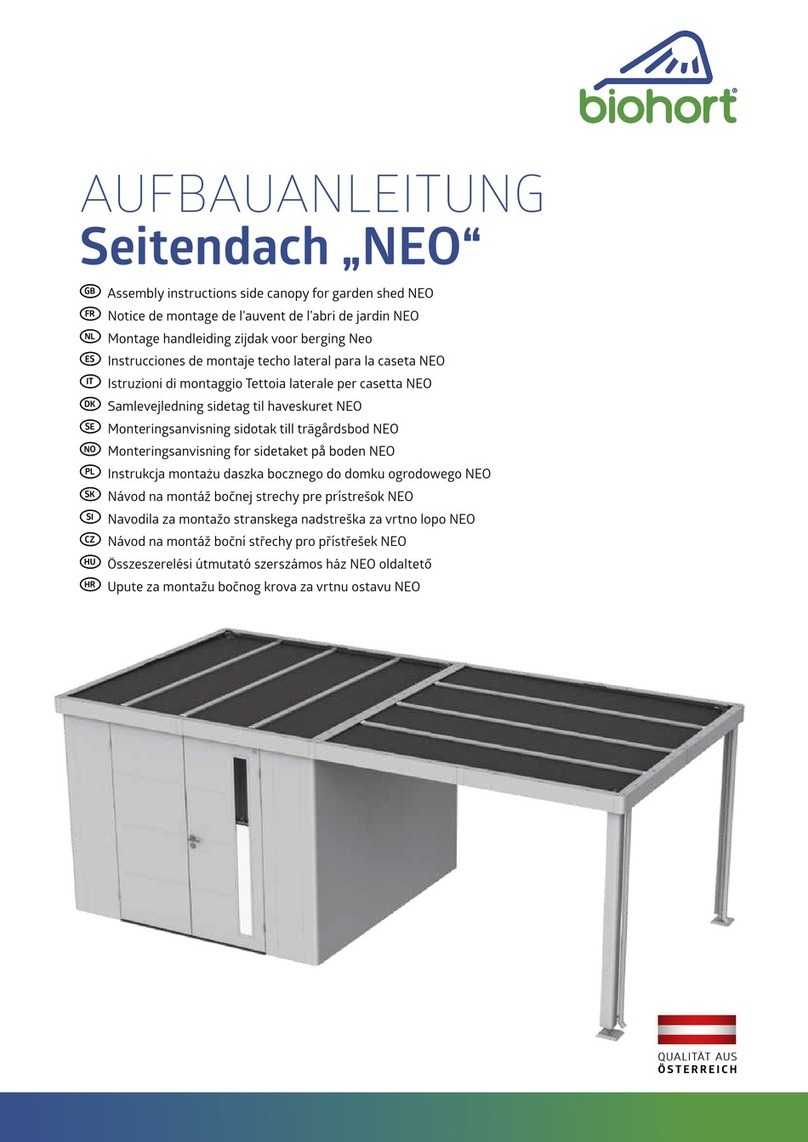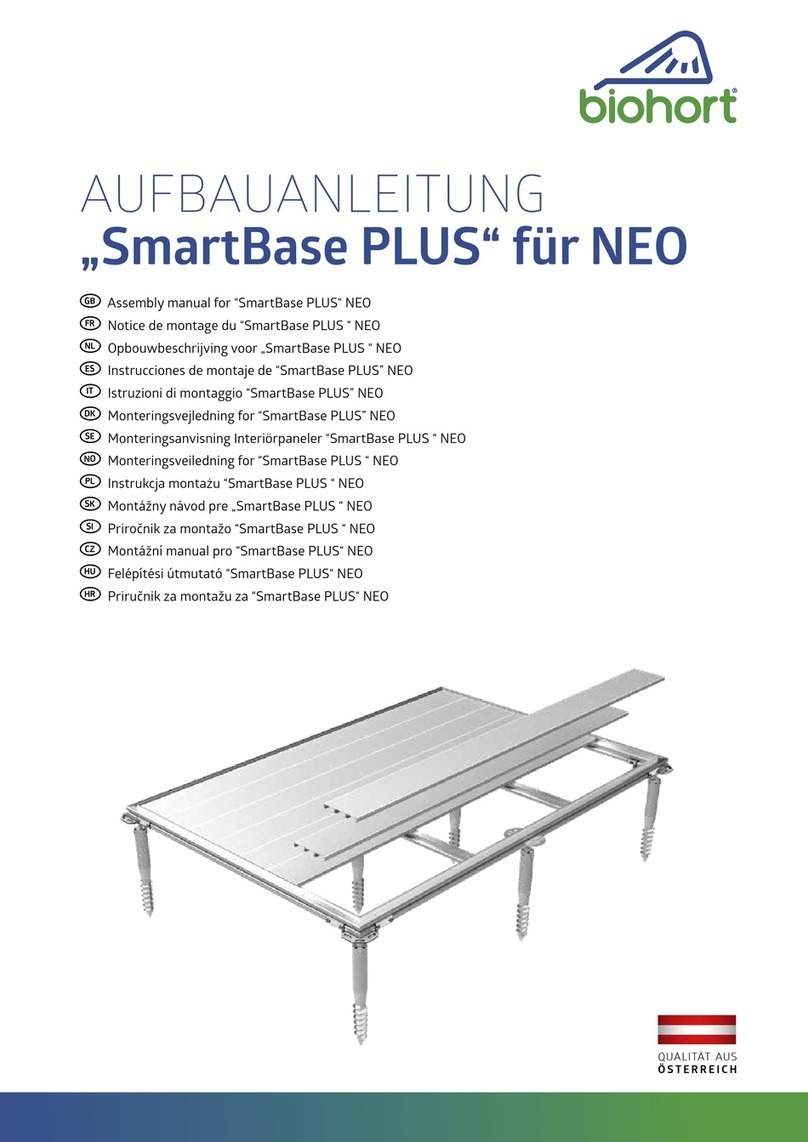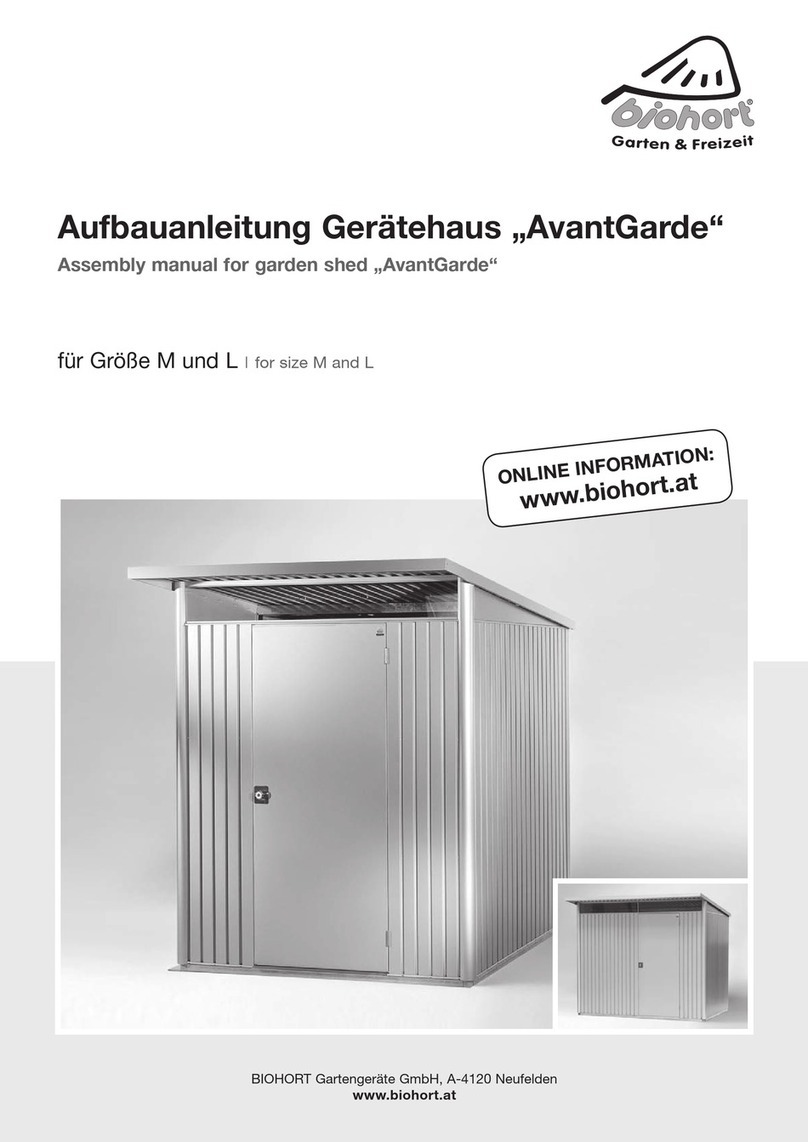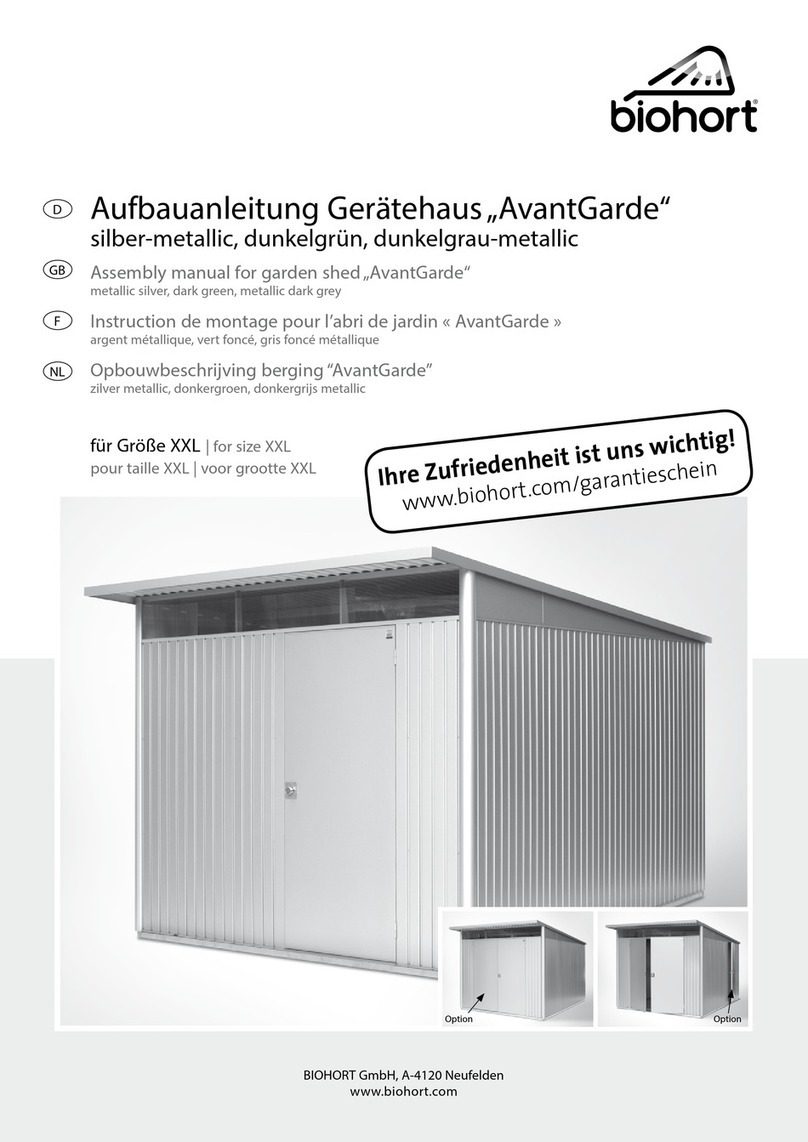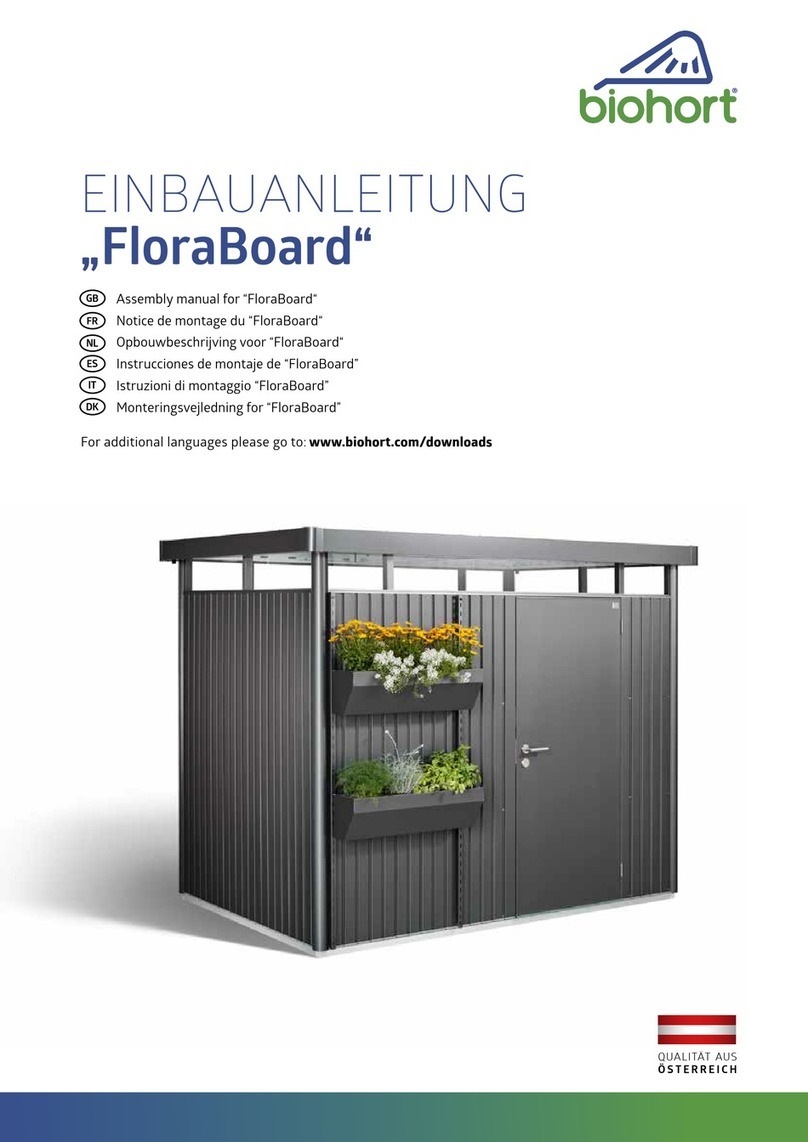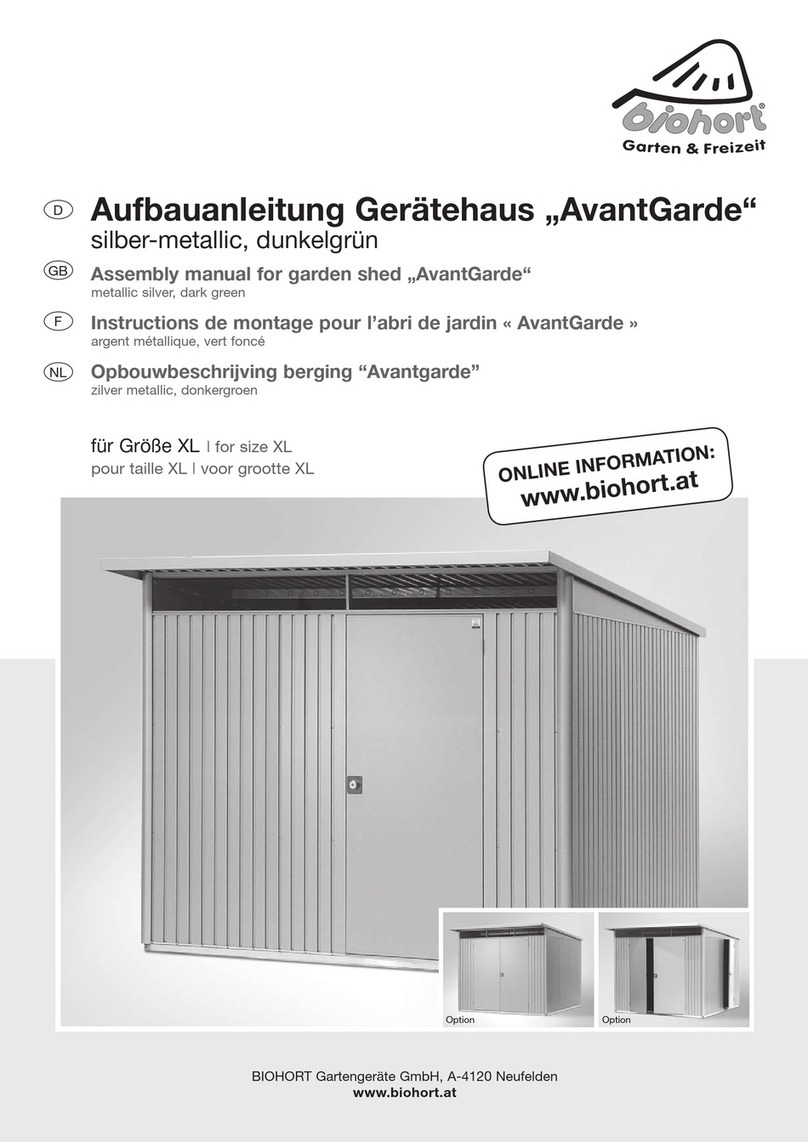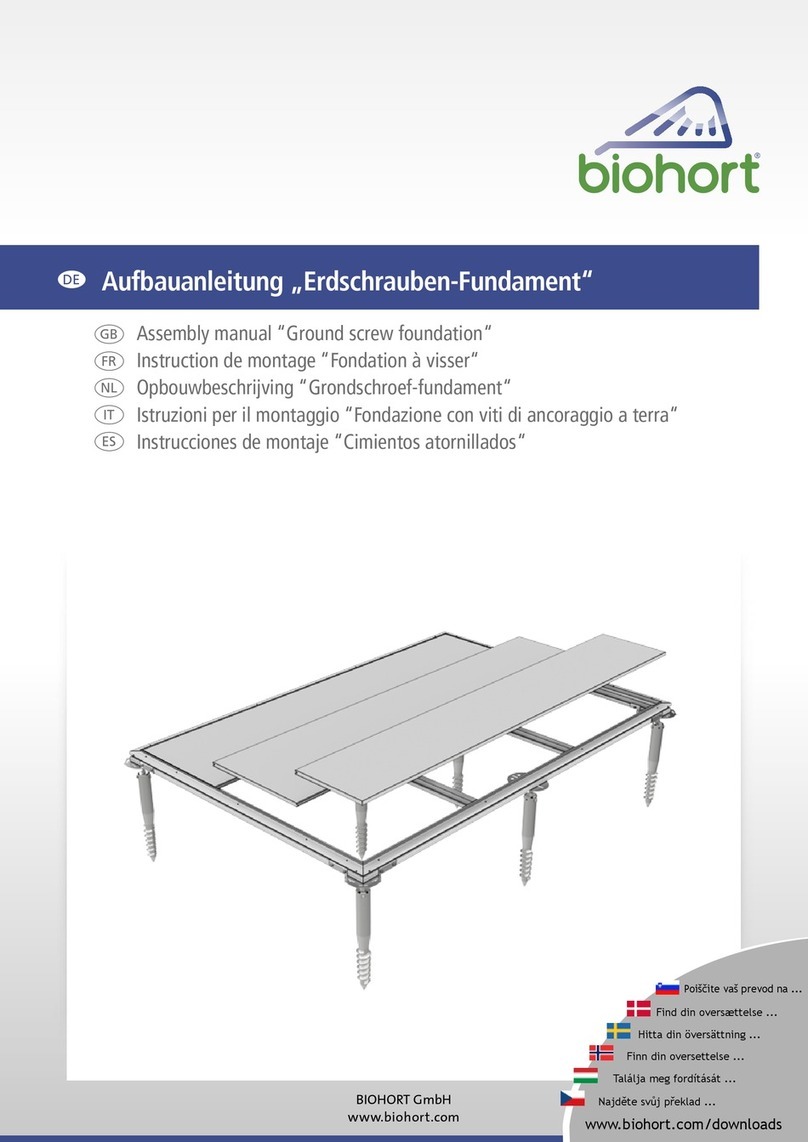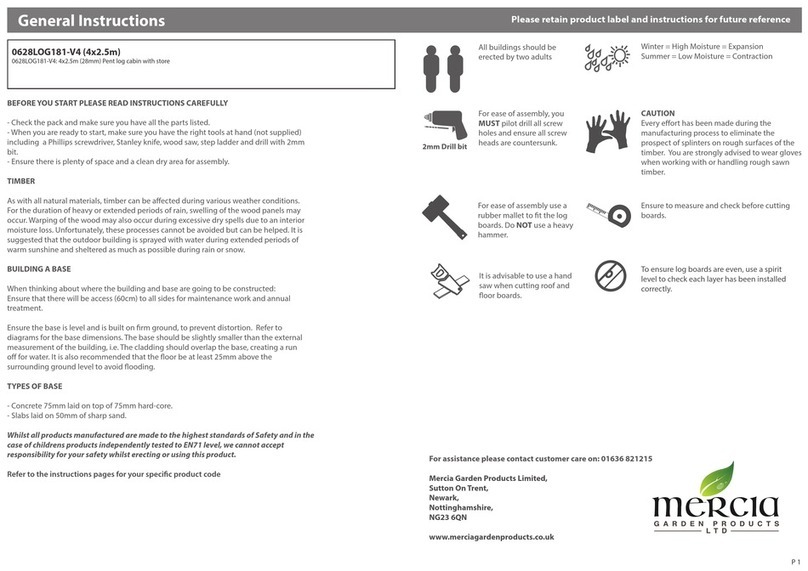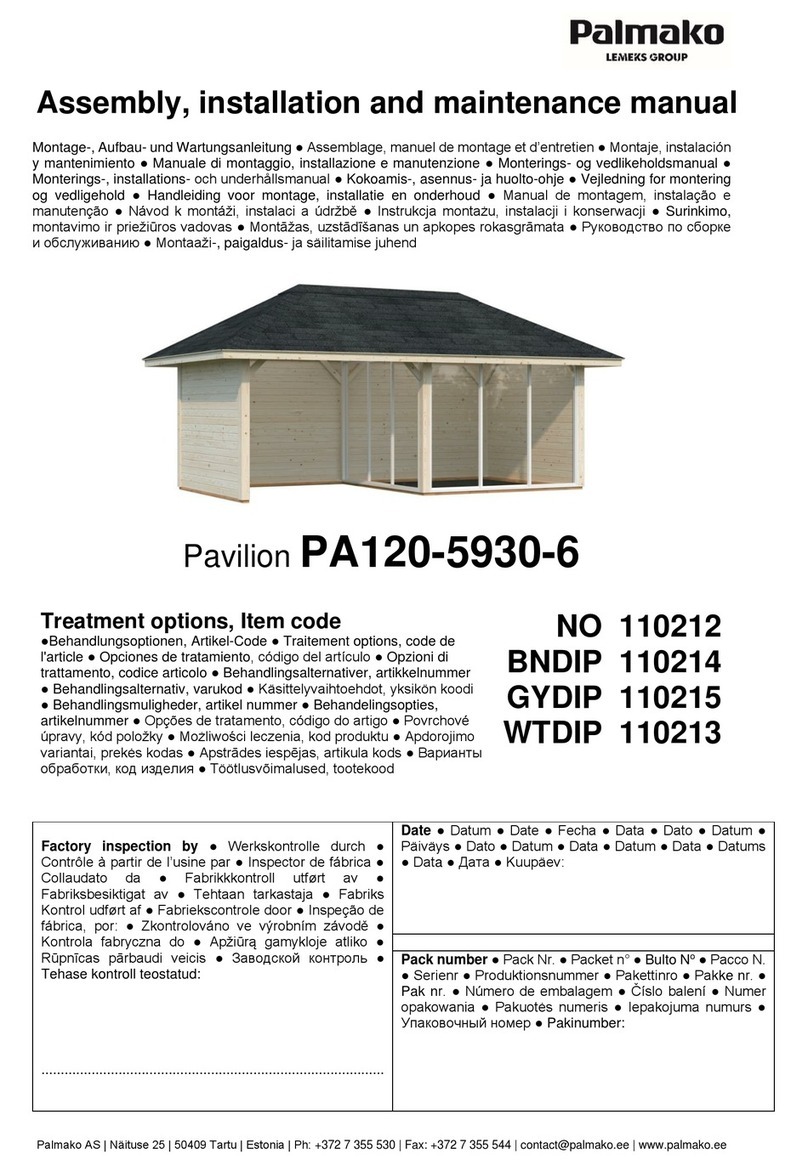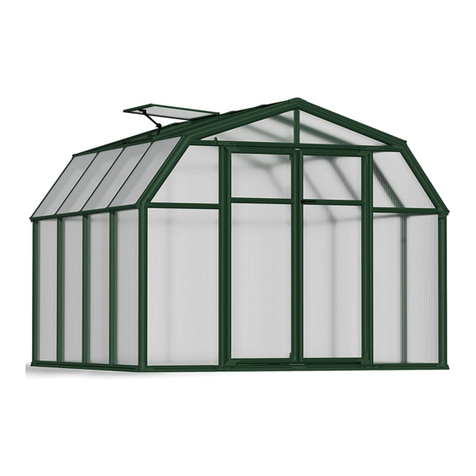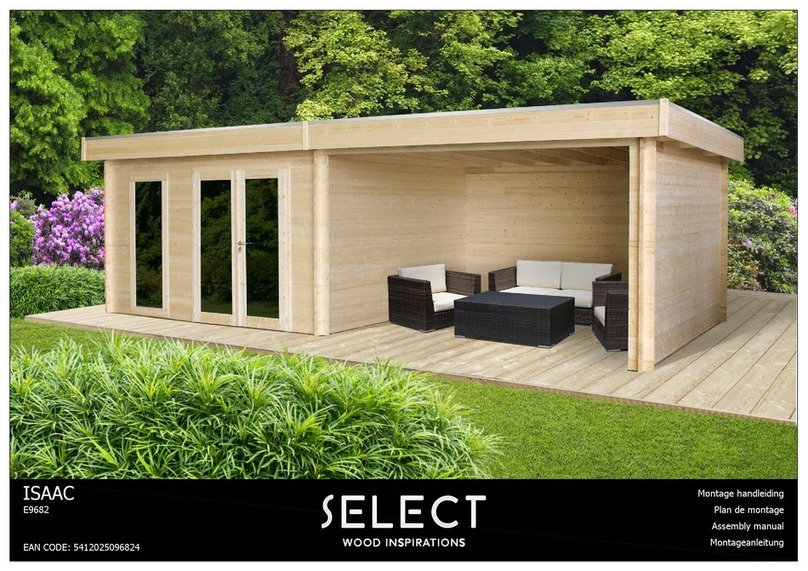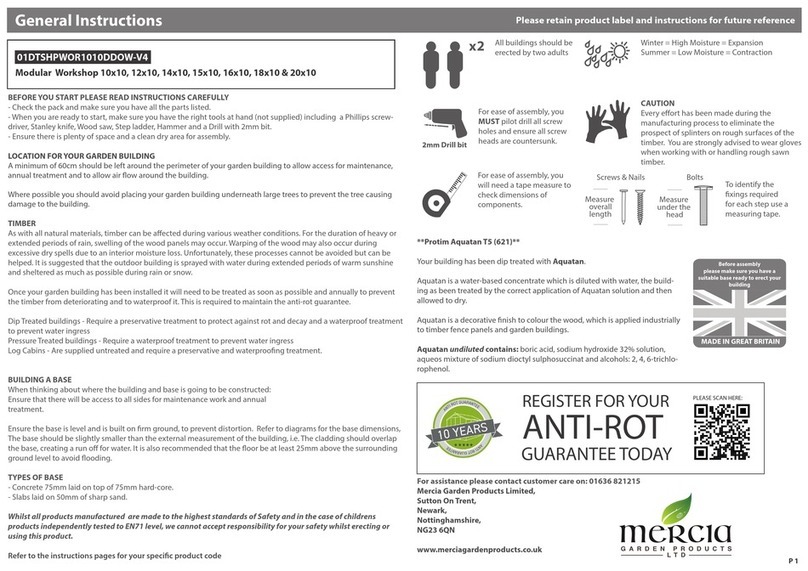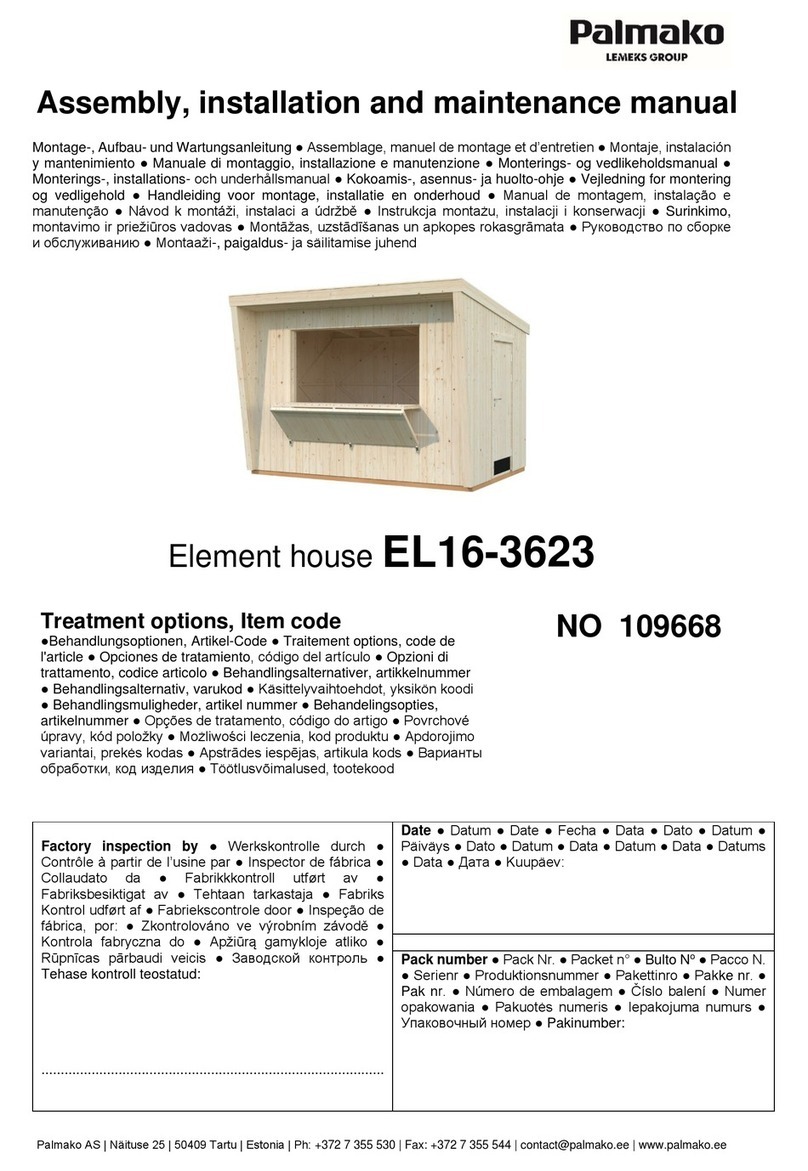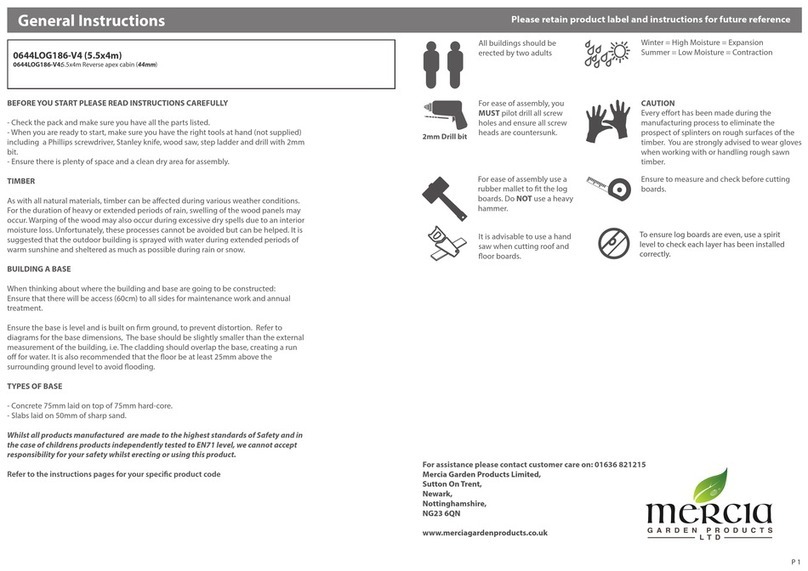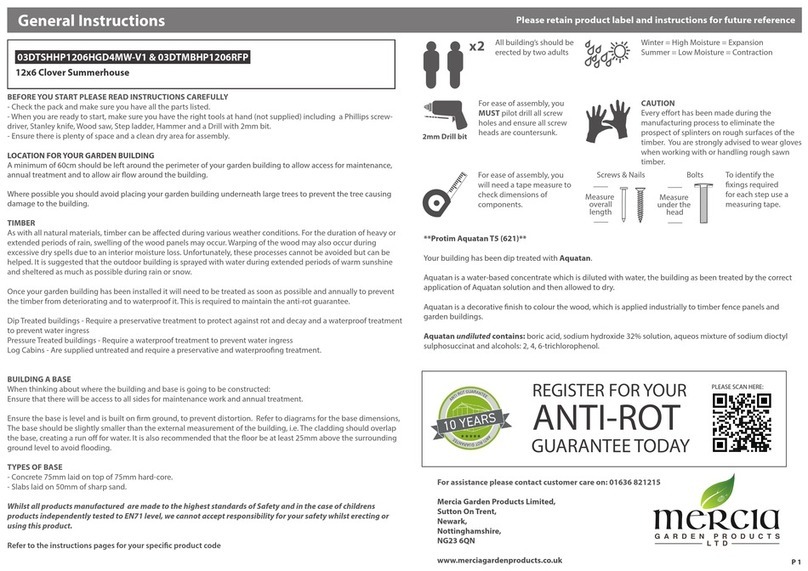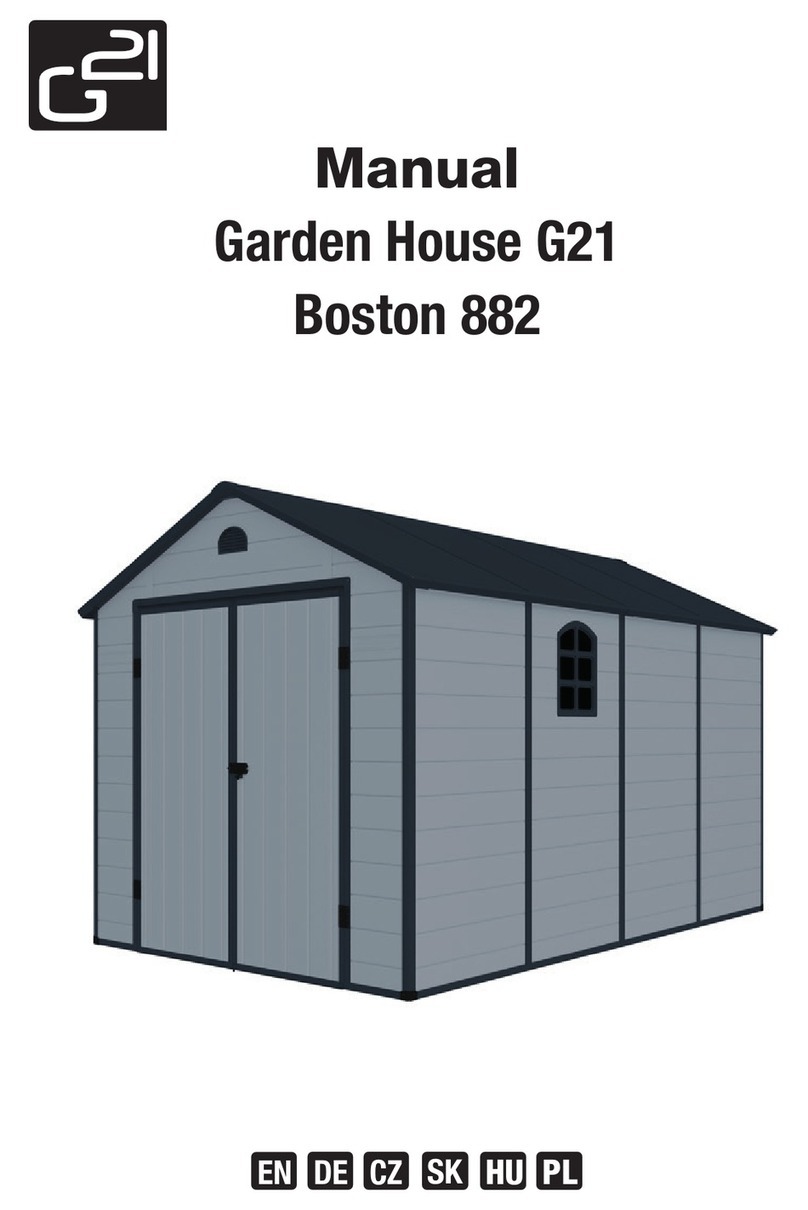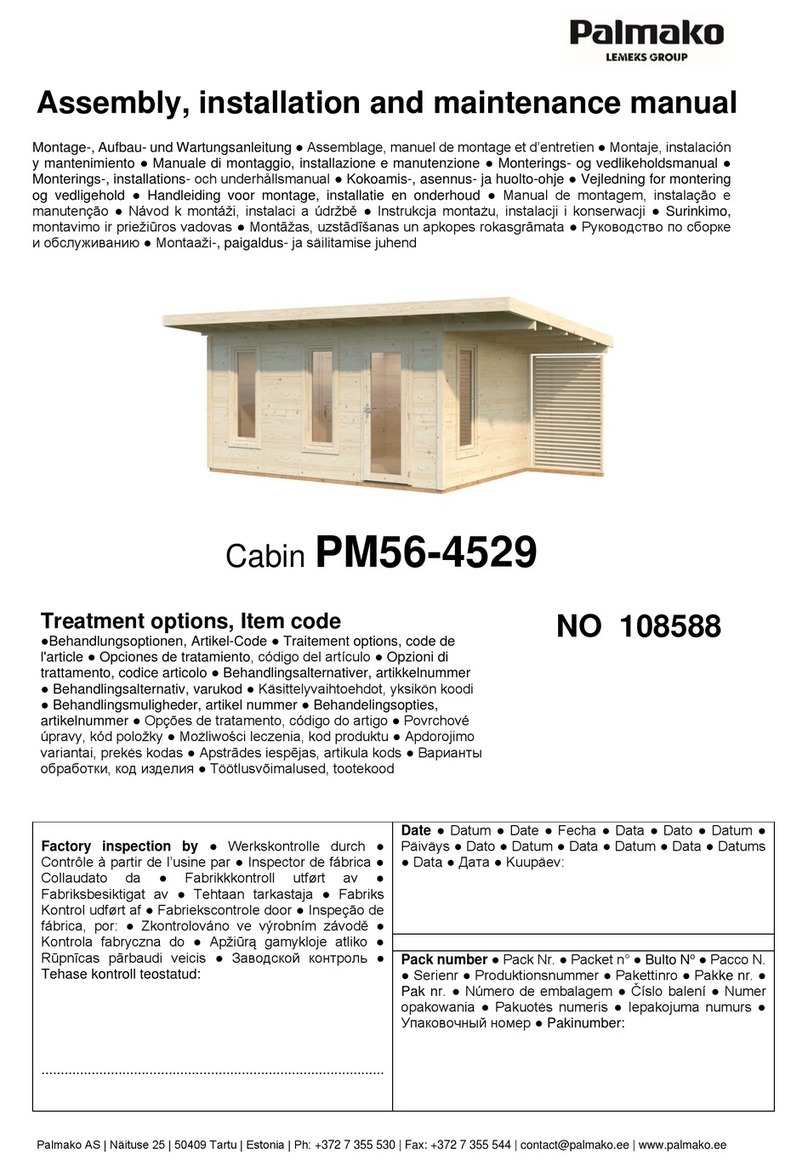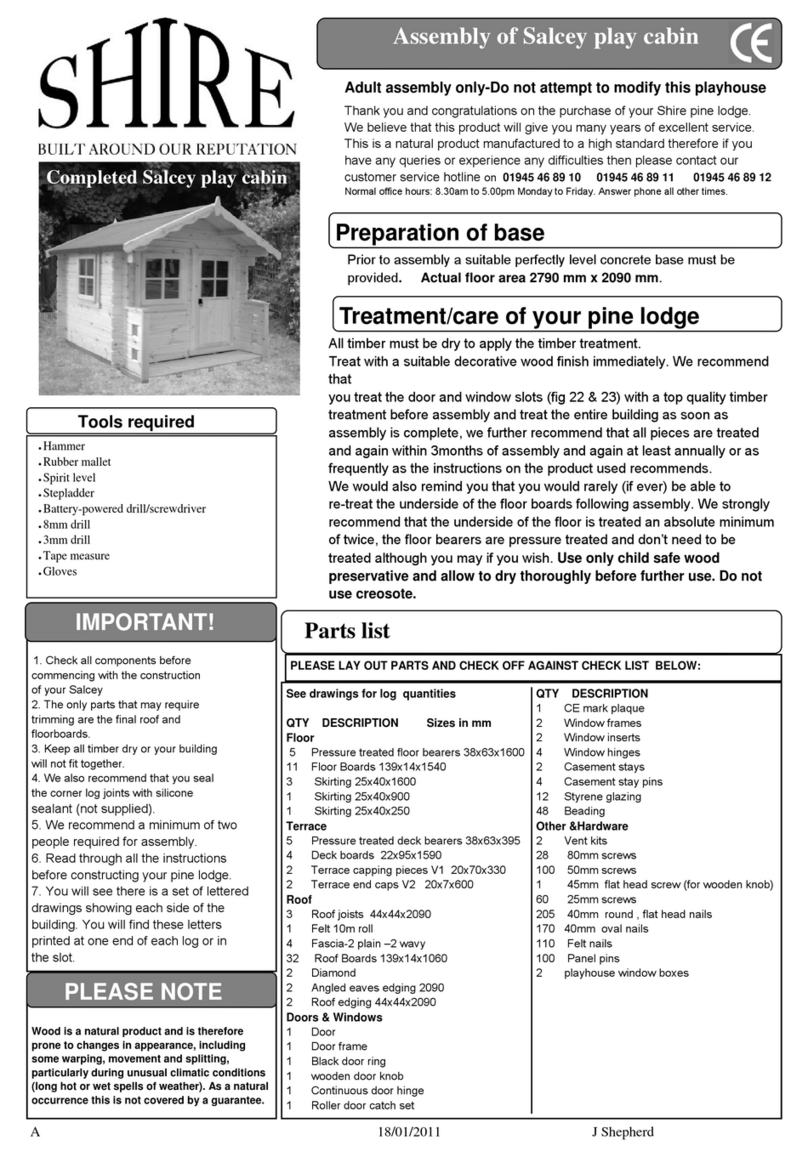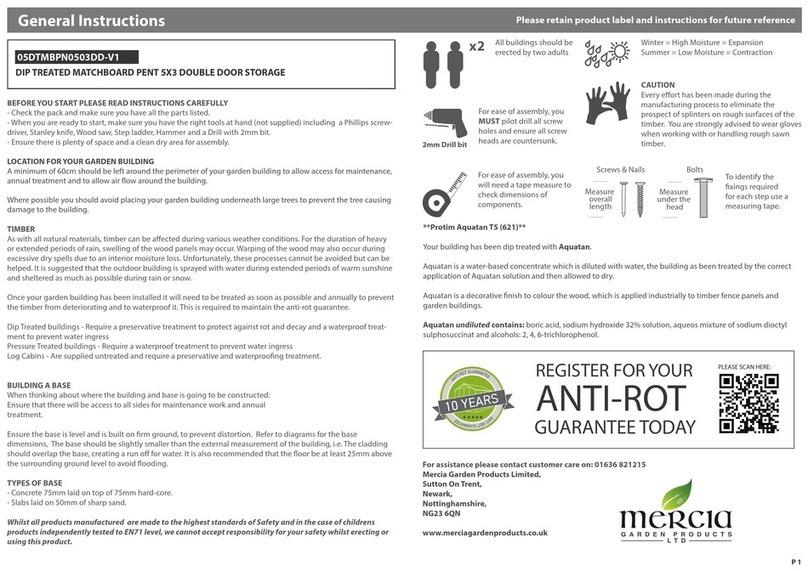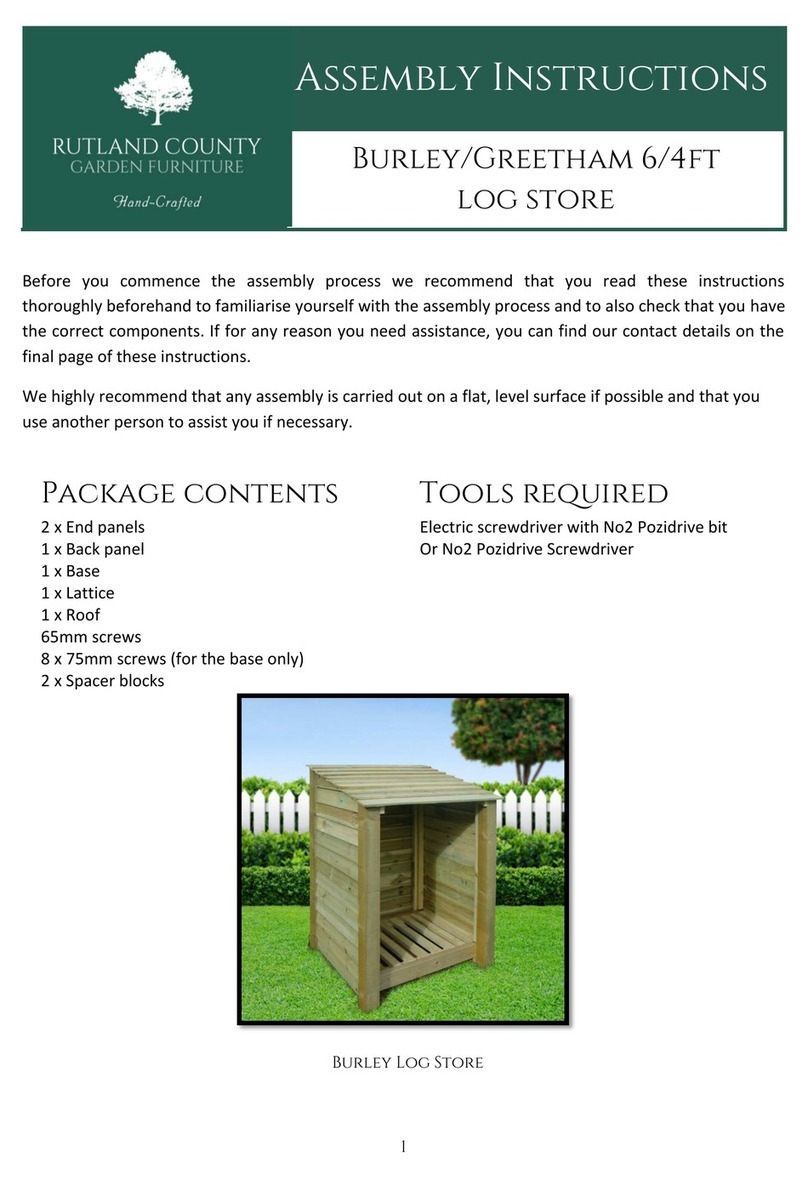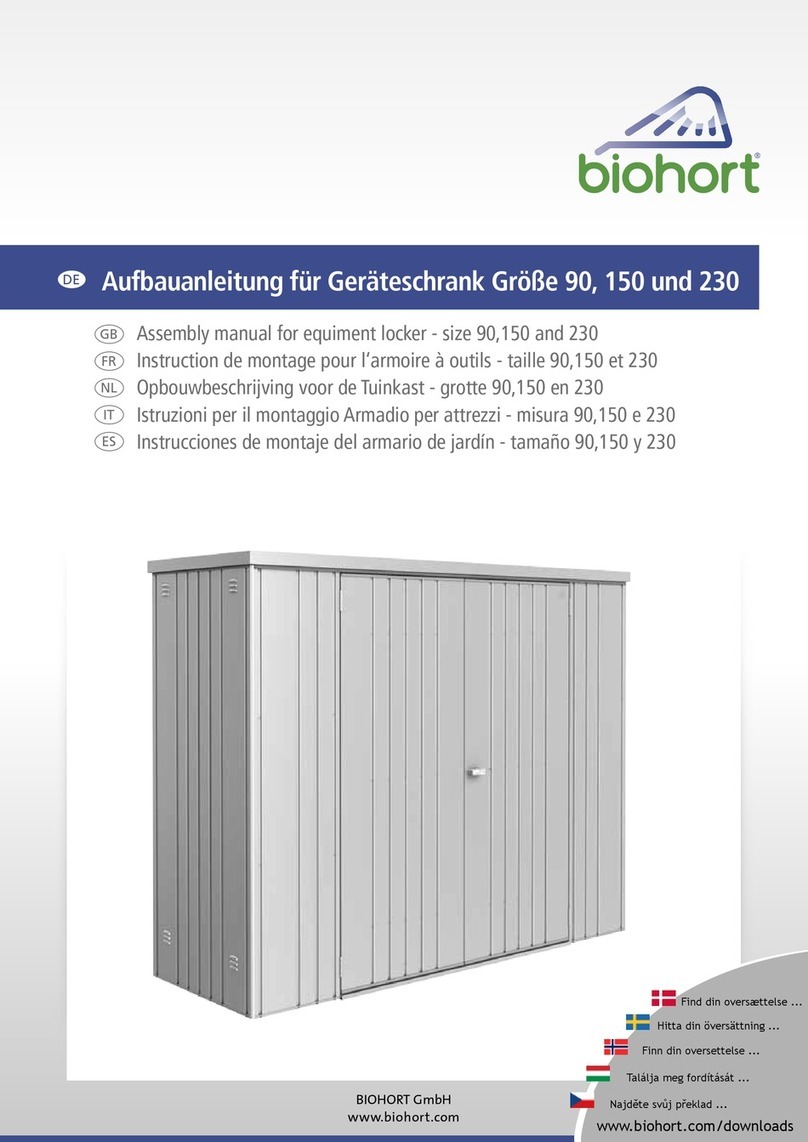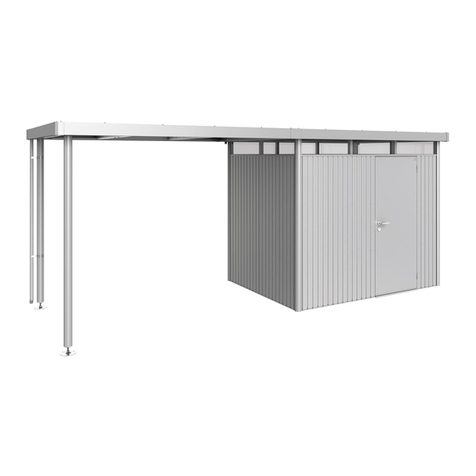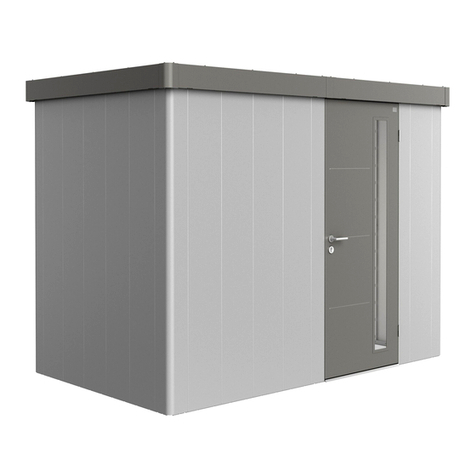
2
GB F NLD
Important Details
regarding assembly:
• This assembly manual provided
shows the erection of the garden
shed model “AvantGarde”, size
“M”, it is also valid for size “L”.
• A parts list and plan view is
also included.
• For several assembly steps
additional assistance of 1 or 2
people will be required.
• The door wings can also be
fitted in one of the side walls.
• Nuts not to be tightened
before the end of assembly!
• Before installing accessories
(i.e. 2nd door wing, floor frame,
floor panels, side canopy):
first of all please read the
relevant instructions for fitting
(provided within the packaging
of each accessory).
Recommandations
importantes pour le
montage
• L’instruction de montage qui
suit décrit l’assemblage du
modèle « AvantGarde » taille
« M » ; elle est valable par
analogie pour la taille « L ».
• L’inventaire des pièces et un
plan y sont joints.
• Pour certaines phases de
montage, prévoyez l’aide
d’une ou deux personnes.
• Vous pouvez également monter
la porte dans une paroi latérale.
• Ne serrer les écrous à fond
qu’à la fin de l’assemblage !
• Montage 2ème porte (unique-
ment taille « L ») et autres
accessoires : faites bien atten-
tion s’il vous plait. aux indica-
tions de montage jointes.
Belangrijke tips
voor montage
• Deze opbouw beschrijving
toont de opbouw van de
“AvantGarde” grootte M; deze
geldt ook voor de grootte L.
• De onderdelenlijst en een
plattegrond zijn bijgesloten.
• Voor enige montage stappen
heeft u de hulp van 1 tot 2
personen nodig.
• U kunt de deuren ook in een
zijwand inbouwen.
• De moeren dienen pas aan
het einde van de montage
vastgeschroefd te worden!
• Bij montage van de 2e deur
(alleen voor grootte L) en ver-
dere toebehoren, let u s.v.p.
op de bijgevoegde montage
tips bij deze toebehoren.
Wichtige Hinweise
zur Montage
• Vorliegende Aufbauanleitung
zeigt den Zusammenbau von
„AvantGarde“ Größe „M“; sie
gilt sinngemäß auch für die
Größe „L“.
• Die Stückliste und ein
Grundrissplan liegen bei.
• Für einige Montageschritte
benötigen Sie 1 bis 2 Helfer.
• Sie können die Flügeltüre auch
in einer Seitenwand einbauen.
• Schraubenmuttern erst
am Ende der Montage
festziehen!
• Montage 2. Türflügel (nur für
Gr. L), Seitendach und weiteres
Zubehör: bitte beachten Sie
die diesem Zubehör beilie-
genden Montagehinweise.
Pflege und Wartung
• Ölen Sie das Schloß und die
Scharniere jährlich!
• Dach von Laub freihalten,
keine Chemikalien lagern!
• Kratzer sofort mit beilie-
gendem Lack ausbessern!
Care and
maintenance
• Lubricate the hinges and the
lock once a year!
• Keep the roof free of leaves,
do not store chemicals!
• Touch-up scratches immedia-
tely with the paint provided!
Entretien et
maintenance
• Graisser la serrure et les
charnières une fois par an !
• Débarrasser le toit des feuil-
lages ; ne pas entreposer de
produits chimiques !
• Retoucher aussitôt les rayures à
l’aide de la laque jointe !
Onderhoud
• Geef het slot en scharnieren
jaarlijks olie!
• Hou het dak vrij van bladeren;
geen chemicaliën opslaan!
• Krassen direct met de
bijgeleverde lak bijwerken!
ATTENTION
• Do not assemble the shed on a
windy day!
• Wear working gloves - some
of the metal pieces may have
sharp edges!
• When making the foundation
arrangements consider the
possibility of heavy rain-fall,
take necessary precautions to
ensure that water cannot leak
in under the floor profiles (i.e. a
raised foundation).
• Do not forget to anchor the
shed against gale force wind!
ATTENTION
• Ne pas assembler l’abri de
jardin lorsqu’il y a du vent !
• Porter des gants, certaines
parties métalliques peuvent
être coupantes !
• Penser aux fortes pluies lors de
la réalisation de la fondation :
l’eau de ruissellement ne doit
pas pouvoir pénétrer sous les
profils de sol, à l’intérieur de
l’abri de jardin (ex : fondation
surélevée).
• Ne pas oublier l’ancrage
contre le vent!
LET OP
• Berging niet bij wind opbouwen!
• Gebruik werkhandschoenen –
sommige metalen onderdelen
kunnen scherpe kanten
hebben!
• Denk bij het plaatsen van de
fundering aan de mogelijk-
heid van sterke regenval; het
oppervlaktewater mag niet
onder het bodemprofiel in de
berging kunnen binnendringen
(bijv. een verhoogd fundament).
• Denkt u aan een stormzekere
verankering!
ACHTUNG
• Gerätehaus nicht bei Wind
aufbauen!
• Arbeitshandschuhe verwenden
– einige Blechteile können
scharfkantig sein!
• Denken Sie bei der Fundament-
gestaltung an starke Regenfälle:
das Oberflächenwasser darf
nicht unter den Bodenprofilen
in das Gerätehaus eindringen
können (z.B. erhabenes
Fundament).
• Sturmfeste Verankerung
nicht vergessen!
